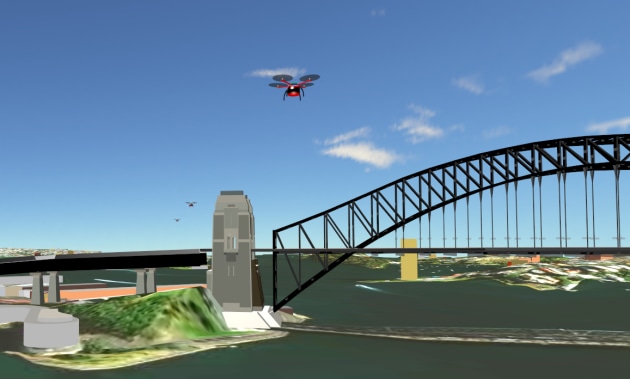It is often said that Australia punches above its weight; we do more with less and we seem to do it well. And sometimes, we lead the world. We just don’t talk about it much in our tall poppy culture.
In the field of advanced defence technology, we are indeed leading the world on a number of fronts. In a series of articles, I’ll be delving into some of the cutting edge Australian research and development.
To kick off, the biggest game changer of them all; collectives of smart, thinking, coordinated autonomous systems and artificial intelligence (AI). In short, robots. Once they were just for the dull, dirty and dangerous jobs but advances in adjacent technologies mean that their application in the Defence sector can go well beyond these basic roles.
I recently sat down with Associate Professor Robert Fitch at the University of Technology Sydney (UTS) to explore these themes. Prof Fitch heads up the School of Mechanical and Mechatronic Engineering and has been working in this field for over 20 years.
Global Award
This year in Montreal, Prof Fitch’s team won the Best Paper Award in Service Robotics at the International Conference on Robotics and Automation (ICRA). It’s the largest robotics conference in the world with over 4,000 attendees and around 3,000 papers submitted. What did Prof Fitch and his team do to win? They produced the best known mathematics for enabling robot systems to work together in collecting information and making decisions in a timely way (i.e. gathering massive amounts of data, sharing it, analysing it, and then make decisions in real time, and doing it quickly).

“We are giving robot systems the ability to start to have more human-like ways of understanding the world in terms of gathering data from their sensors, and make decisions in real time that allow them to complete their mission,” Prof Fitch explained to ADM.
Prof Fitch uses the term “multi robot systems” rather than swarms, but essentially the mathematics he and his team are developing allow teams of robots to work together to understand objects in the world at small and large scales and coordinate their actions in a very tightly coupled way, fast and in real time. And, he explains, “we’ve demonstrated that in the defence domain.” For obvious reasons we can’t say much more than that here.
Battlefield apps?
Prof Fitch explains the cases he has worked on involve on the ground activities in semi-urban environments where there may not be valid maps.
“Imagine a team of robots, without any centralised controller, on the ground and in the air with sensors, LIDAR, radar, cameras, hyperspectral etc., identifying objects and reporting back,” Prof Fitch said. “The system itself has a task and the robots have to make decisions that collectively achieve the mission with each robot depending on the other.”
One can only imagine what an advantage these capabilities will provide our military, and it’s only getting better, more advanced and potentially more lethal as we progress. Chief of Army’s Accelerated Warfare concept is closer than we think.
Over the next few months I’ll highlight other disruptive technologies, companies, universities and the people in Australia that truly lead the world.
Note: Lincoln Parker works for the NSW Defence Innovation Network (an initiative of the NSW Government, Defence Science & Technology Group and seven NSW universities). The author’s views are his own.




